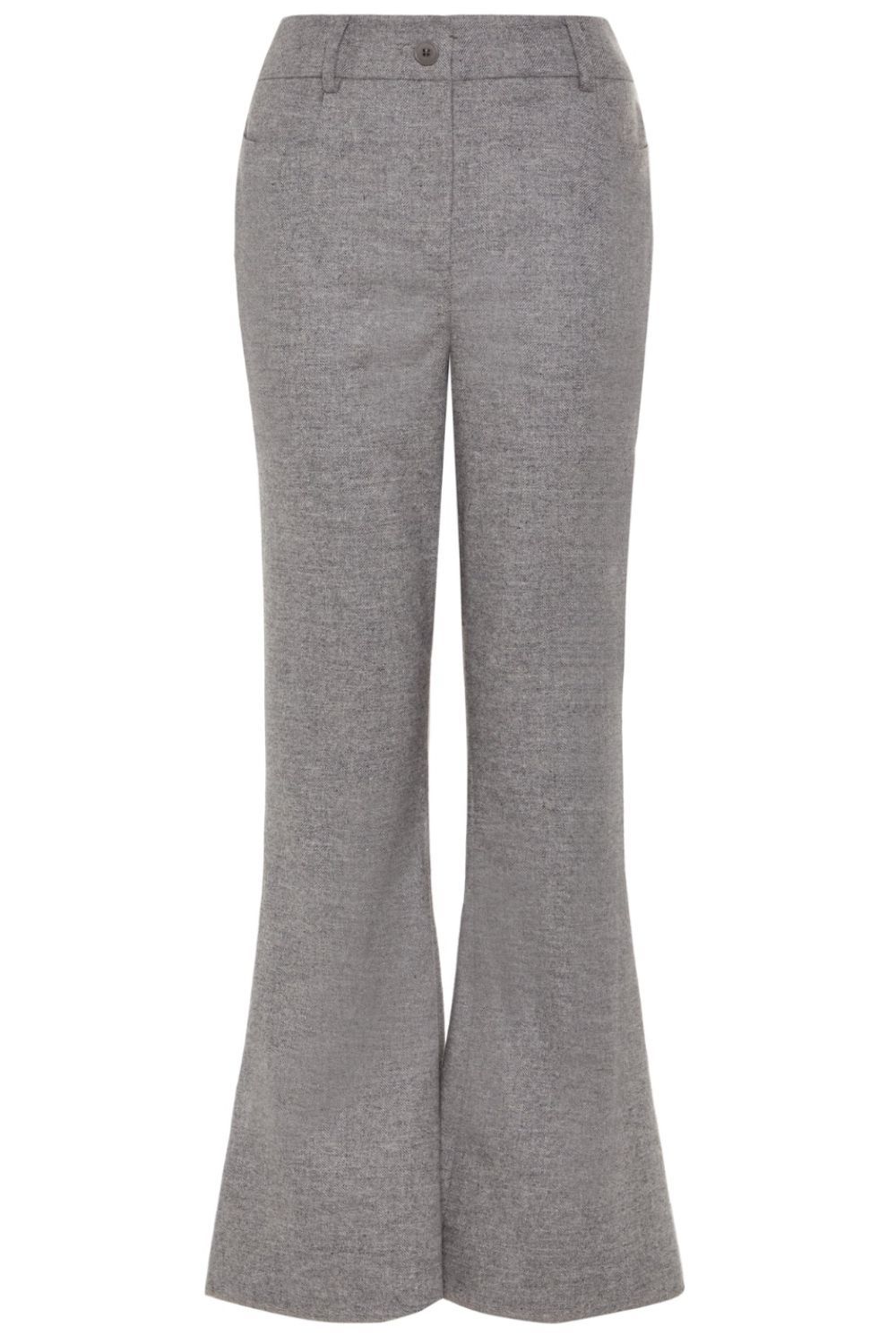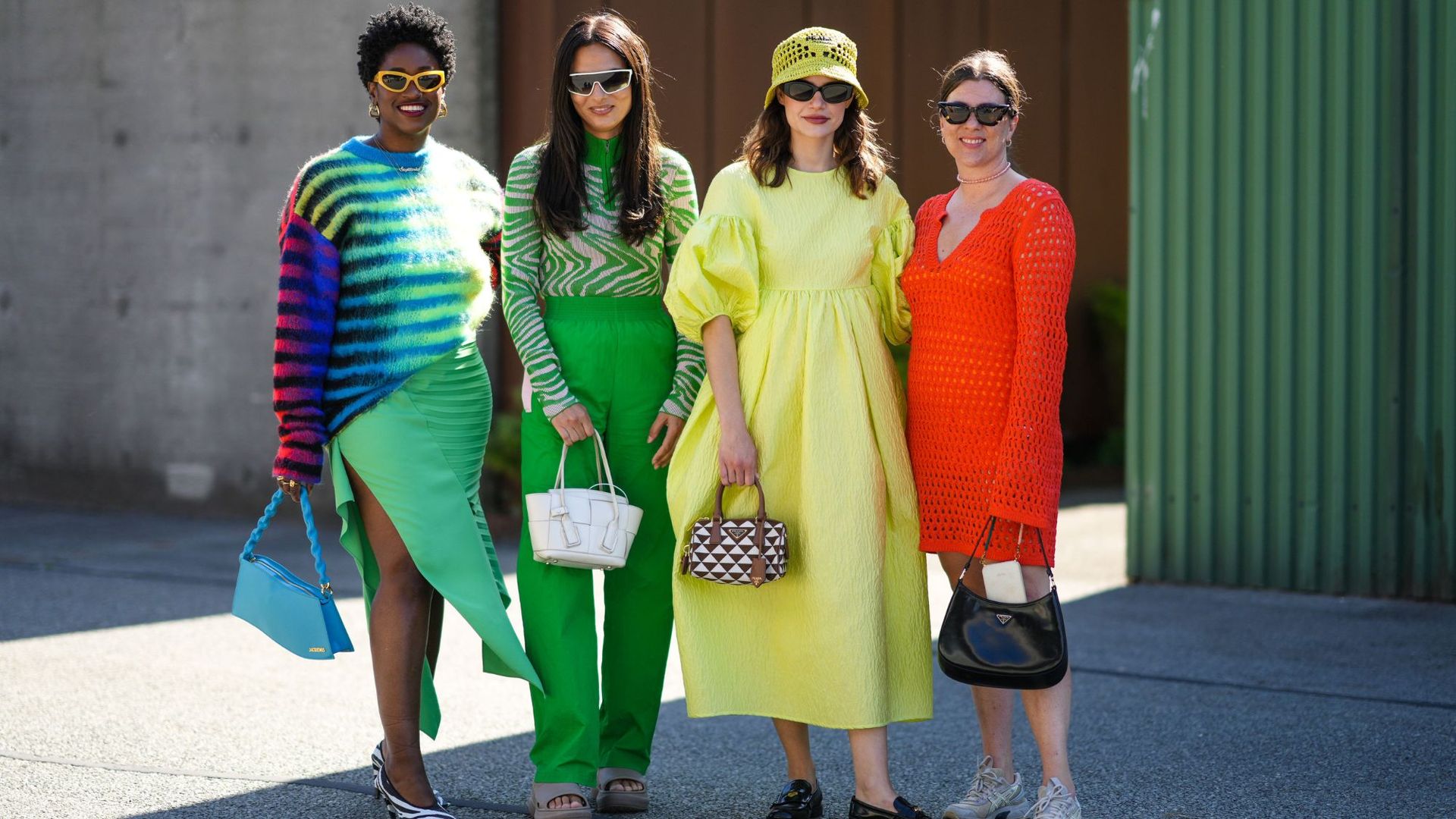Did you know that 50% of the world’s female population is under 5’4″? In fact, according to data (opens in new tab)the mean height of women in the UK is around 5’3″. Yet, sadly, clothing is rarely made for those of us who stand at that stature.
Finding the best petite fashion buys can be quite the task, particularly as historically, petite lines have felt very few and far between. Luckily, in recent years it seems that more and more brands have heard our call and are finally launching collections created specifically with women 5’3″ and under in mind.
When it comes to petite dressing, there is so much more to think about than simply the clothes you buy. How you style and tailor a look also needs to be taken into consideration. With this in mind, we spoke to designer and petite expert, Liza Belmonte, to understand the tips and tricks petite women need to know. Liza is the founder of the petite-specific brand, Kjinsen, (opens in new tab) which creates luxury womenswear in the UK for women 5’4″ and under.
For expert tips on petite dressing and my favourite spring petite buys, keep scrolling.
Petite Dressing Tips You Need To Know
We tapped petite expert, and the founder of fashion label Kjinsen, Liza Belmonte for her top tips for styling and dressing as a petite woman.
1. Prioritise fit
“The most powerful thing you can do for your wardrobe is prioritise a good fit,” Belmonte explains. “Invest in clothes that fit well or get clothes altered to fit you,” she adds. As a petite woman, there is nothing worse than having sleeves that are too long, and trouser hems that drag on the floor, creating a look that drowns you in fabric.
“Slim and tailored fits will always be easier to style if you are petite but that does not mean you always have to wear fitted clothes. If you want an oversized look, don’t just go for a size up, choose clothes that have been engineered to be oversized on your petite proportions,” Liza recommends. “I always recommend getting your oversized clothes from a petite brand to avoid that frumpy look.
2. Accessorise strategically
“Your accessories have the power to really transform how tall you appear so make sure you use them in your favour,” Liza explains, suggesting that a large handbag can shink your frame, while smaller handbags will work to make you appear taller.
She continued, “A belt, depending on where it is placed, can dramatically affect your proportions. I have a long torso-to-leg ratio so I use belts on pretty much everything (dresses, blazers, etc.) to mark my waist higher than it is and give the illusion of longer legs.”
In addition to this, Liza also said that jewellery, hair accessories and even scarves, have the ability to draw the eye upwards, while in the footwear department, nude tones and pointy-toe silhouettes can work to elongate your legs.
3. Show some skin
While many say that ankle-length trousers will work to elongate your frame, Liza argues that it is actually more valuable to show off your wrists and neck. “Show skin around your wrists and forearms by rolling up your sleeves, and your neck by styling your hair up. They are the daintiest parts of anyone’s body and help create a balance of proportion,” she explains. “This is especially key when you are wearing oversized clothing. The Olsen Twins who are very petite use this styling trick regularly. As part of their signature minimalist style, they wear a lot of oversized clothing, yet their sleeves are almost always rolled up or pulled up.”
4. Go for monochrome or a colour gradient looks
“A tried and proven way to use colour to give the illusion of height is to wear a monochromatic look,” Liza says. “It creates vertical lines and elongates the silhouette.” Liza continues that adding accessories is a great way to ensure your outfit still looks interesting.
“If you are petite and love combining multiple colours or neutrals in your outfits, it is a good idea to create a colour gradient—for example, beige, to taupe, to brown—rather than wearing “blocks” of highly contrasting colours (like a white top and black trousers). The gradient will streamline the whole look and avoid creating harsh lines and blocks that cut across the silhouette.”
Shop The Best Petite Spring Buys, Tried and Tested by a Fashion Editor:
Whistles Petite Annabelle Cape Sleeve Dress
(Image credit: Future/ @zoepopi)
(opens in new tab)
Whistles Petite Annabelle Cape Sleeve Dress
“If you’re a petite woman, looking for elevated wardrobe essentials, boy, do I have good news for you? Whistles released its first-ever petite collection last month and its proportions are honestly perfect! This dress would make an ideal wedding guest look, featuring a floaty, cape sleeve and just right midi length.” – Zoe Anastasiou, Fashion Editor
Reformation Petites Mason Pant
(Image credit: Future/@zoepopi)
(opens in new tab)
Reformation Petites Mason Pant
“Reformation has been championing petite sizes for quite a while. And by now, the brand effectively has it down to an art form. Finding trousers is a particularly difficult task for women on the shorter side, but I can happily report that these Reformation trousers fit perfectly. I am wearing a very, very low block heel with these trousers, but anticipate they would work just as well with sneakers or sandals in summer.” – Zoe Anastasiou, Fashion Editor
Levi’s Wedgie Jeans
(Image credit: Future/ @zoepopi)
(opens in new tab)
Levi’s Wedgie Straight Jeans
“I love a denim brand that provides multiple leg length options, and Levi’s has been doing so for years. Rather than having a specific petite collection, at Levi’s you can opt for a shorter leg length in order to find the perfect fit. These are a 26-inch inseam, which would be a cropped mid-calf length on some, but provides the perfect ankle length on me. Not to mention, these are some of the most comfortable jeans in my wardrobe.” – Zoe Anastasiou, Fashion Editor
Whistles Petite Alana Denim Jumpsuit
(Image credit: Future/ @zoepopi)
(opens in new tab)
Whistles Petite Alana Denim Jumpsuit
“I’m always quite dubious about investing in jumpsuits, as the sizing has the ability to go wrong in two different sections—firstly, I can be too long in the torso, and then secondly too long in the leg. This Whistles jumpsuit pleasantly surprised me and is yet another example of their A+ petite collection. The fit of this jumpsuit was a 10/10. The torso fit perfectly, while the leg length created a chic cropped ankle silhouette.” – Zoe Anastasiou, Fashion Editor
Reiss Petite Zaria Off-The-Shoulder Dress
(Image credit: Future/@zoepopi)
(opens in new tab)
Reiss Zaria Off-The-Shoulder Dress
“Reiss launched its petite collection in 2021, catering to a whole new group of women. Personally, I have found some of their petite pieces are still a little too long, but that was certainly not the case when it came to this dress. The length sat just above my ankle, but as I am on the smaller side of the petite spectrum, the dress would be more of a midi if you’re closer to 5’3″ or above. I love the drop-shoulder silhouette on this dress, which feels very elevated and timeless. Another great option for imminent summer weddings. Chic!” – Zoe Anastasiou, Fashion Editor
Whistles Petite Crepe Boyfriend Blazer
(Image credit: Future/ @zoepopi)
(opens in new tab)
Whistles Petite Crepe Boyfriend Blazer
“I’m beginning to sound like a broken record, but I’ve just found another gem at Whistles. Historically, I have avoided investing in boxy boyfriend blazers as they would end up looking too oversize, but the proportions on this worked so well. Any petite woman will know that sleeve lengths can be quite an issue but here the sleeves hit right at my wrist, while the shoulders were also the perfect width.” – Zoe Anastasiou, Fashion Editor
Whistles Petite Authentic Barrel Leg Jeans
(Image credit: Future/ @zoepopi)
(opens in new tab)
Whistles Petite Authentic Barrel Leg Jeans
“Barrell leg jeans have been a silhouette I have typically avoided as a petite woman. The wide shape has historically looked a little overwhelming on my frame. Though once again, the proportions are really working here. I would suggest wearing an oversize jean like this, with a slimmer-fitting top in order to balance the look.” – Zoe Anastasiou, Fashion Editor
Reiss Petite Lina High-Rise Wide Leg Trousers
(Image credit: Future/@zoepopi)
(opens in new tab)
Reiss Lina High-Rise Wide Leg Trousers
“While some of Reiss’ petite offering is still too long for me, these trousers were a great fit. Ideally, they’d need to be worn with a small heel, though. I love the wide-leg, relaxed fit of these trousers and if you’re taller than 5’3″ they should fit you just right!” – Zoe Anastasiou, Fashion Editor
Kjiinsen Wool and Cashmere Blend Suit
(Image credit: Future/@zoepopi)
“Liza Belmonte, the designer behind Kjinsen, is a petite woman herself. Standing at 5’1″ Belmonte has the lived experience to understand what petite women want. She has created a line of elevated products that look and feel premium. And you can certainly tell the craftsmanship and construction of this suit is high-end. Made from a cashmere and wool blend, the fabric is soft and comfortable, while the fit takes into account the proportions of a petite woman. The shoulder width and sleeve length of the blazer were just perfect.” – Zoe Anastasiou, Fashion Editor
Kjinsen Double Breasted Blazer
Kjinsen High Rise Flared Trousers
Xhicboutique.com – Get this Product & More at Fun Prices!
Source link





























